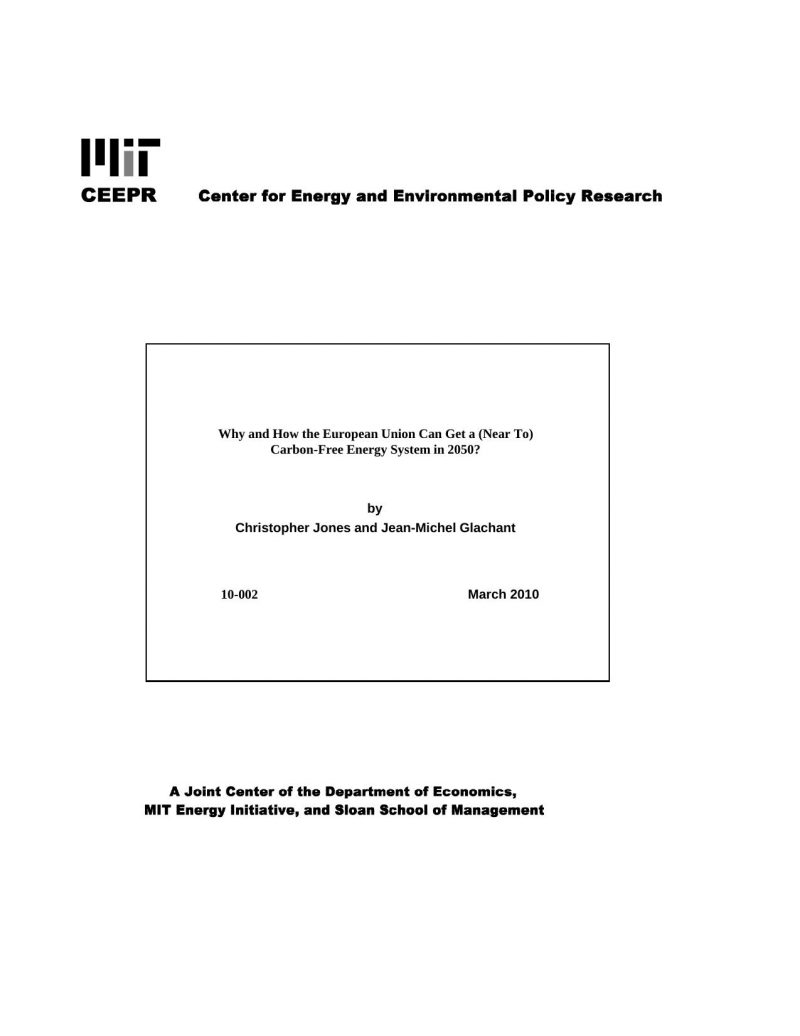Why and How the European Union Can Get a (Near To) Carbon-Free Energy System in 2050?
Christopher Jones and Jean-Michel Glachant
10-Mar
Reducing the European Union GHG emissions by at least 80% by 2050 will require a near zero carbon electricity, road and rail transport industry, and heating and cooling in buildings. As compared to “business as usual” the amount of energy required will basically vary according to the level of energy efficiency: it is the “system scale”. Then it is the “system design” which will provide the needed carbon-free technologies consisting of renewable, nuclear and fossil fuels with carbon capture and storage. A zero carbon energy system by 2050 is then demonstrated to be feasible. However it is far from easy and requires immediate and substantial policy action. The main policy implications are addressed in this paper. The 5 years 2010-2015 will be decisive in establishing a regulatory environment whereby the EU will be in a position, by 2020, to take the next steps to achieve the 2050 goal.



